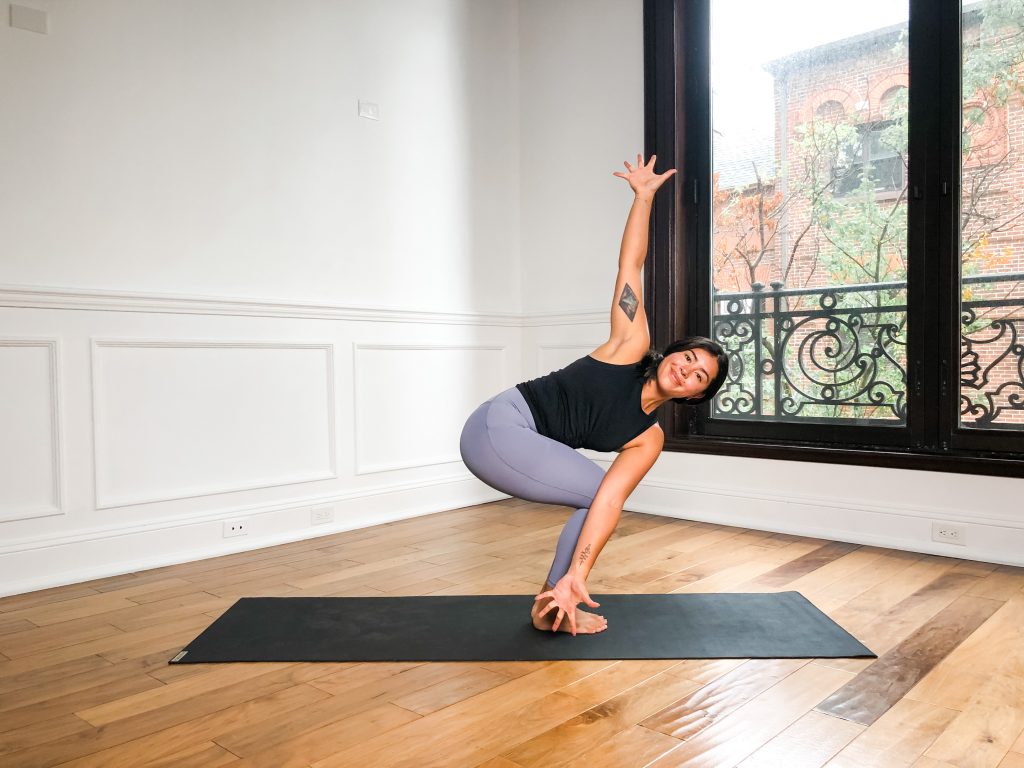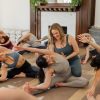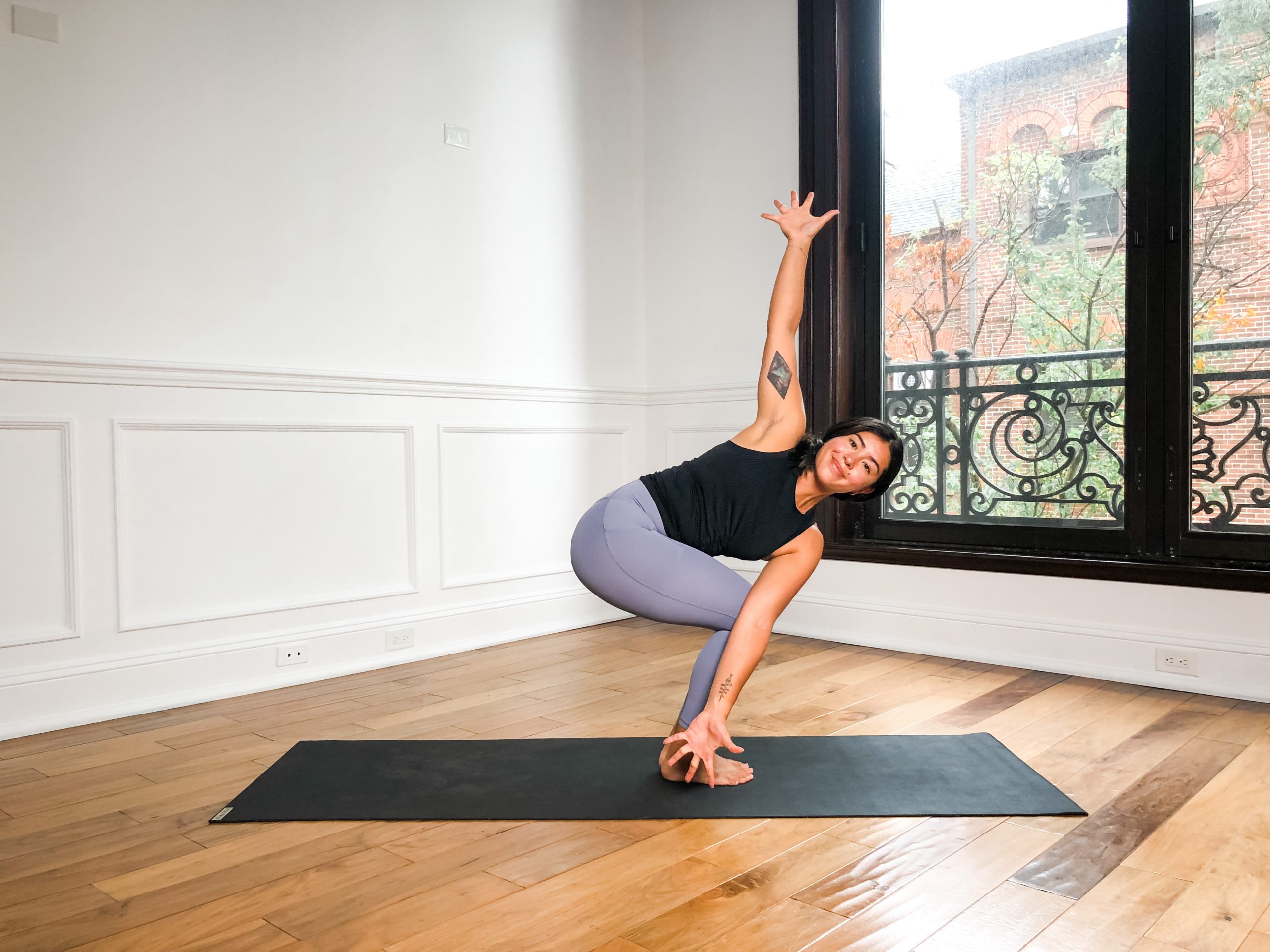
Our journey through the chakras continues with our third chakra, otherwise known as Manipura Chakra. Manipura chakra is located in the solar plexus (aka the belly right around the naval). This is the home of our personal power, will, self-esteem, and autonomy. At this point in the chakra system, we’ve created a steady ground and experienced movement, change, and flow with emotions which builds energy. As we enter manipura, we have the opportunity to turn this energy into action.
Third chakra encourages enthusiasm and enjoyment about life as we develop our sense of self in this world. This is necessary for making decisions that are most in alignment with who we are and where we are going, for taking full responsibility for our actions, and for taking risks, which can lead to deep transformation.
When I think of third chakra, I think POWERHOUSE — A healthy third chakra allows us to stand strong and tall in who we are and to arrive to our lives knowing that we hold the key to the life we truly desire.
Peak Pose: Twisted Chair with Open Arms (Parivrtta Utkatasana)
Any deep twisting posture is going to require a turning of the belly, which requires effort combined with a softness of the tissues around the belly. A blanket roll for the belly and Kapalabhati pranayama can be good ideas to accompany this practice.
Supporting Pose 1: Extended Child’s Pose with Side Stretch (Utthita Balasana)
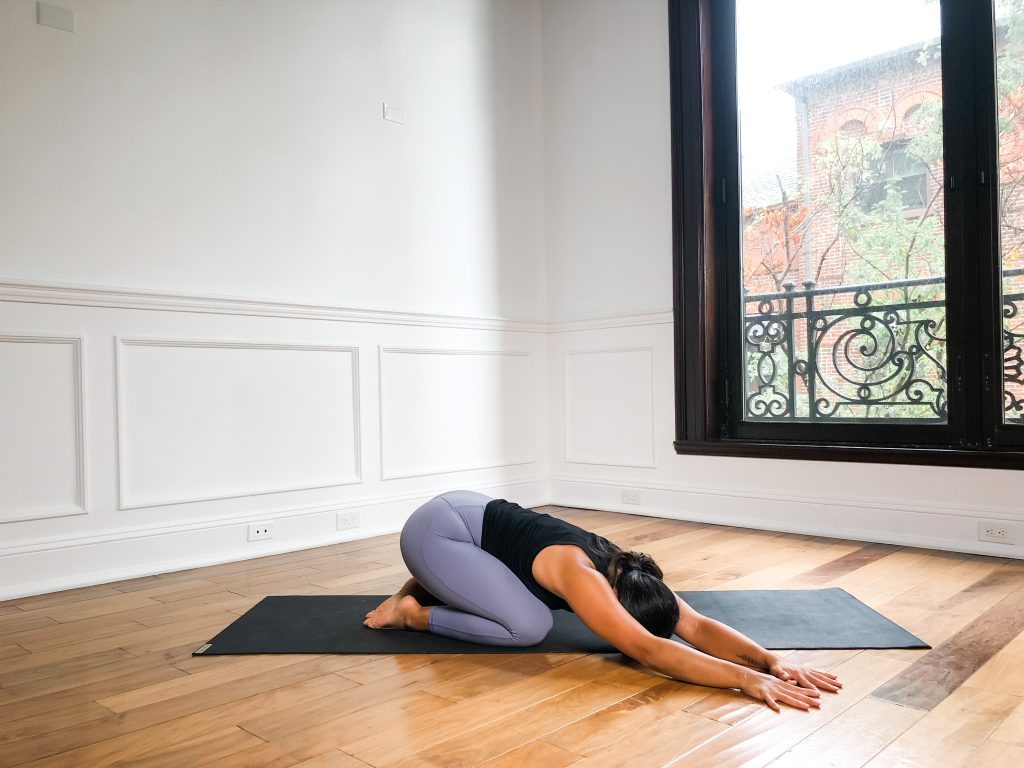
Seeing that twisting postures require the torso to turn from one side to the other, it’s important that the side body has length to allow space for the twist to occur. Child’s pose has both legs bent, like in chair pose and by adding in a side stretch this pose really helps the practitioner prepare for the peak pose.
How to:
- Come into child’s pose with the big toes together and knees wide.
- Keep the sit bones towards the heels and reach the arms towards the front of the mat.
- Walk the hands over to the left side of the room to stretch the right side of the body. You can walk the right hand farther out or cross the right hand on top of the left to intensify the stretch.
- After ~5 breaths, walk the hands through center and repeat in the other direction.
Supporting Pose 2: Side Angle (Parsvakonasana)
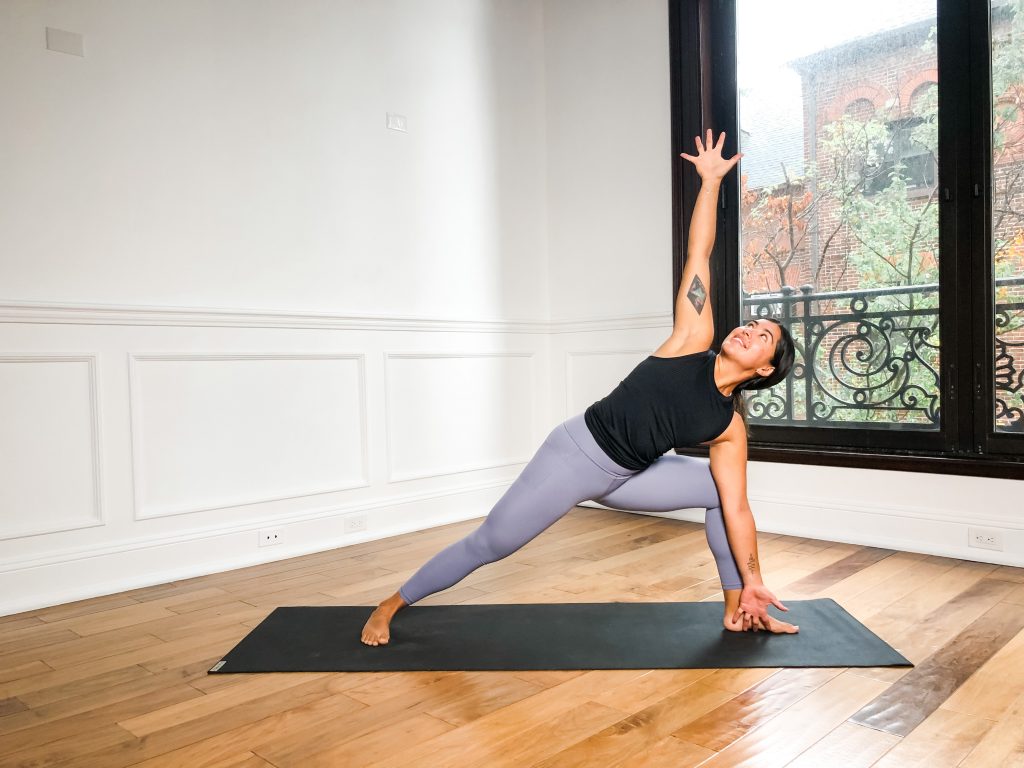
Side angle helps the practitioner come into a pose with a twisting element and arms spread. This pose can really teach the importance of twisting the whole torso, chest included, and highlights the role the arms can play in such a pose. Notice below how the left side of the chest comes through to twist? This allows the shoulder to be in a good position to spread the arms.
How to:
- From warrior II (left foot forward), bring the left hand down to the ground on the inside of the left foot. Inside meaning along the edge of the big toe side.
- Turn the belly from right to left and press the left arm against the inner left knee to bring the left side of the chest through.
- Reach the right arm up to the ceiling and draw the shoulder blades towards one another to spread the collarbones.
- Lean the chest back and take the gaze towards the top hand.
Supporting Pose 3: Low Lunge Twist
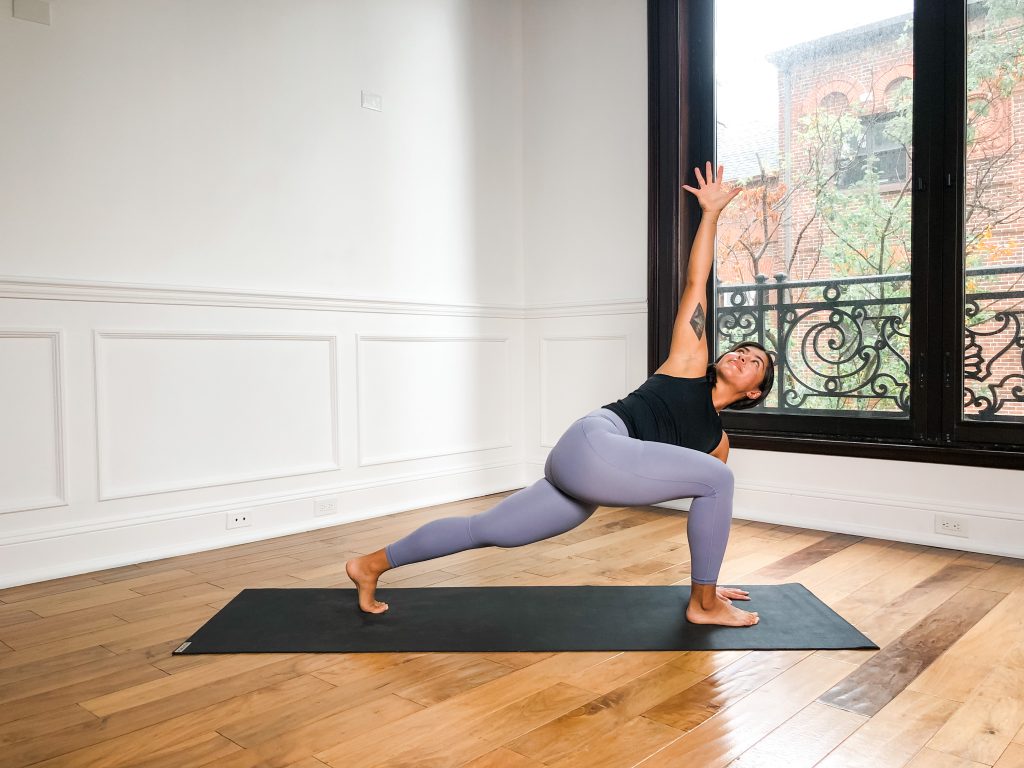
Low lunge twist is similar to chair twist in that it’s a closed twist, meaning the belly is turning towards the leg. This combined with the open arms makes it a great prep pose for the peak!
How to:
- From low lunge (with right leg forward), take the left hand down to the ground on the inside of the right foot.
- Press the left side of the rib cage and torso to the right and up to the ceiling.
- Reach the right arm up to the ceiling and lean the chest back as you draw the shoulder blades towards one another.
- Gaze up towards the top hand.
And Finally, Twisted Chair with Arms Extended (Parivrtta Utkatasana)
How to:
- Come into chair pose with the feet together and legs as close as you can manage.
- Take the hands into a prayer at the center of the chest.
- On your exhale, turn your belly to the right and hook the left elbow to the outside of the right knee.
- Use the elbow and knee connection to help turn the belly and the chest. Really try to bring the left side of the chest up towards the sky.
- Reach the arms away from the chest and as you do this, bring the shoulder blades towards one another to broaden the chest.
- Take the gaze either to the side wall or up to the top hand.
- Come back to a neutral chair and then repeat on the other side. You can always come to mountain pose in between to be able to fully enter on the other side.
*If the lower back and/or hips feel restricted, let the hips and knees come out of alignment. Meaning, it’s okay to let the one of the knees drift forward to serve the twist. If all feels okay, try to keep the hips and knees in line with one another.


